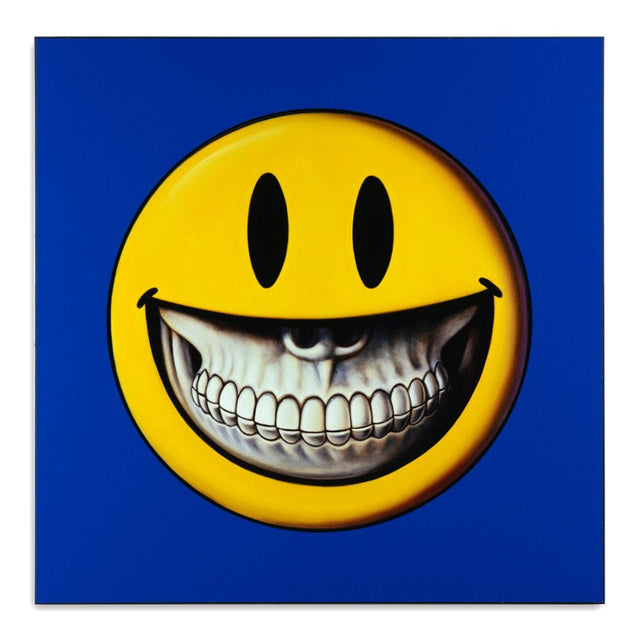
Smiley Face
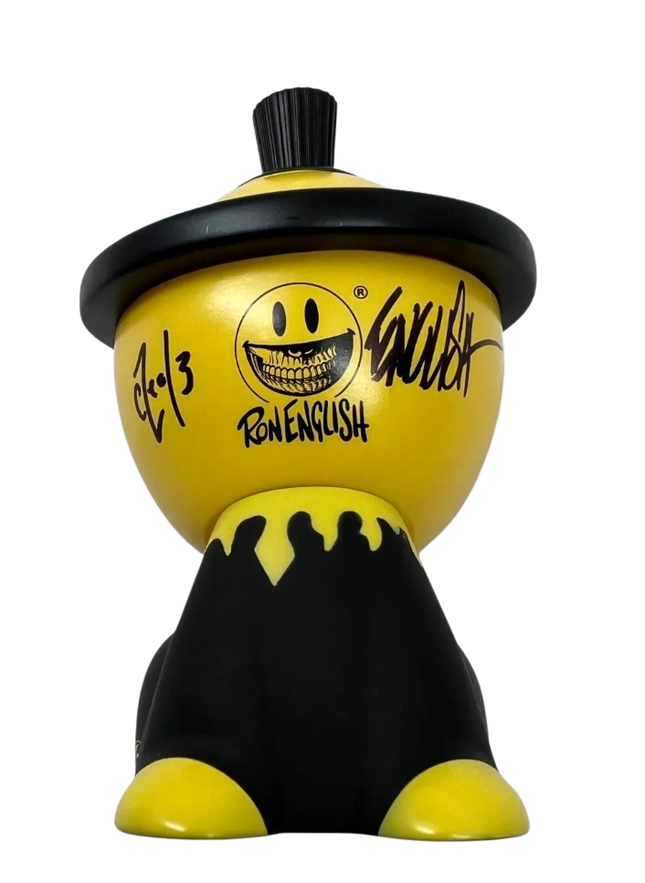
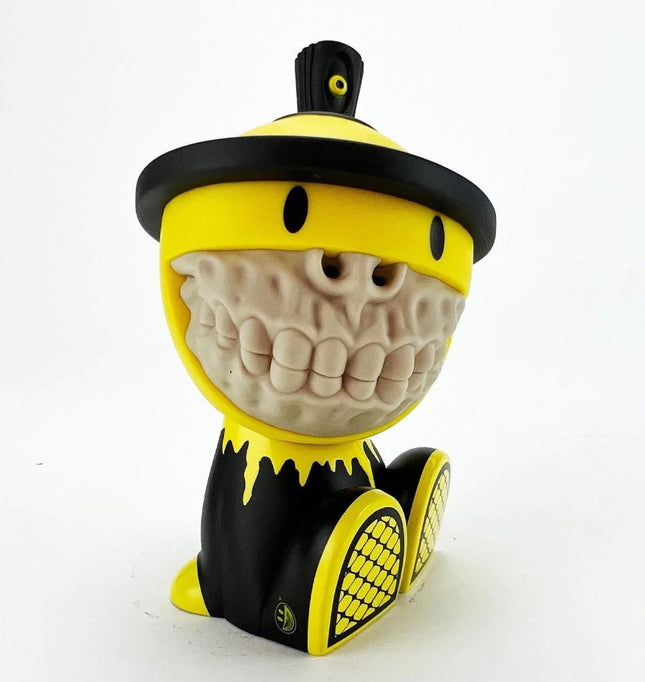
Ron English Grinbot Signed Canbot Canz Art Toy by Ron English x Czee13
Grinbot Signed Canbot Canz Limited Edition Vinyl Art Toy Collectible Artwork by Pop Culture Artists Ron English x Czee13. 2022 Signed Autograph by Ron English x Czee13 Limited Edition of 300 New In Box Rare Ron English Canbot Canz Art Toy Artwork Size 3x5.5. Ron English Grin Smiley Skeletons Smile x Czee13 Canbot Canz . Vast Majority Not Signed. The Fusion of Icons: Grinbot Signed Canbot Canz by Ron English x Czee13 The fusion of iconic styles in Street Pop Art & Graffiti Artwork takes a tangible form in the Grinbot Signed Canbot Canz . This limited edition vinyl art toy marks the collaboration between pop culture artist Ron English and the street art maverick Czee13. This collectible stands at 3x5.5 inches, representing a cross-pollination of distinct artistic signatures—the audacious and often controversial English, with his Grin Smiley Skeletons Smile and Czee13's gritty, urban Canbot Canz aesthetic. Released in 2022, the Grinbot Signed Canbot Canz is a rarity, with a limited edition run of only 300 pieces. Each art toy comes new in its box, embodying the pristine condition sought by serious collectors. Most of these pieces are unsigned, making the signed editions particularly coveted. The autographs of Ron English and Czee13 on these select Canbot Canz s are not mere scribbles; they are the artists' endorsement, a seal of authenticity on a work of art that bridges their worlds. Cultural Significance of the Grinbot Canbot Canz The Grinbot Canbot Canz is more than a collectible item; it symbolizes the subversive humor and critique that Ron English is renowned for. His work often challenges the viewer to re-examine the visual components of our pop culture landscape. The smiling skeleton, a motif regularly featured in English's work, is a commentary on the superficiality of happiness in consumer culture. It is both a smile and a skull, a paradoxical image that resonates with modern society's ephemeral nature of joy. Czee13's Canbot Canz , on the other hand, speaks the language of the streets. It is gritty, raw, and honest. It tells the story of the urban environment, its resilience, and the culture that burgeons within it. The collaboration between these two artists on the Grinbot Canbot Canz is a testament to the power of Street Pop Art & Graffiti Artwork to reflect society's complexities, using the urban landscape as both canvas and inspiration. Investment and Collectibility of the Grinbot Canbot Canz As a collectible, the Grinbot Signed Canbot Canz holds significant value. Collectors of Street Pop Art & Graffiti Artwork understand that the worth of such pieces transcends their physical form. Owning a signed Grinbot Canbot Canz resembles holding a piece of contemporary art history. It is an investment that carries the potential to appreciate as the legacies of Ron English and Czee13 continue to unfold and influence the art world. For enthusiasts of street art, the Grinbot Canbot Canz is a must-have. Its limited edition status ensures exclusivity, and the signatures of Ron English and Czee13 imbue it with a personal touch from the artists themselves. This art toy is a fusion of cultural commentary and street sensibility, a physical representation of the dialogue between pop culture and graffiti art. Impact of Ron English and Czee13 in Artistic Collaboration Ron English's influence in the world of pop art is indelible. Known for coining POPaganda, his work often features a mash-up of high and low cultural touchstones. English's collaboration with Czee13 on the Grinbot Canbot Canz highlights the latter's rising stature in the Street Pop Art & Graffiti Artwork scene. Czee13, with his distinct style that resonates with the pulse of the streets, brings a raw and authentic edge to this joint venture. The result of this collaboration is a piece that stands at the intersection of pop culture critique and street art expression. It embodies art's dynamic and often unpredictable nature that straddles these genres. The Grinbot Canbot Canz becomes a conversation piece, a medium through which the narratives of pop culture and street art are not only told but also questioned and reimagined. The Grinbot Signed Canbot Canz by Ron English, and Czee13 is a testament to the vibrancy and relevance of Street Pop Art & Graffiti Artwork. It encapsulates the essence of two divergent artistic philosophies, creating a unique piece that is both a critique of contemporary culture and a homage to the spirit of street art. For the collectors who seek to own a part of this narrative, the Grinbot Canbot Canz is not just an art toy but a piece of cultural commentary, a remembrance of the ever-evolving story of street art and its indelible impact on the pop culture landscape.
$500.00
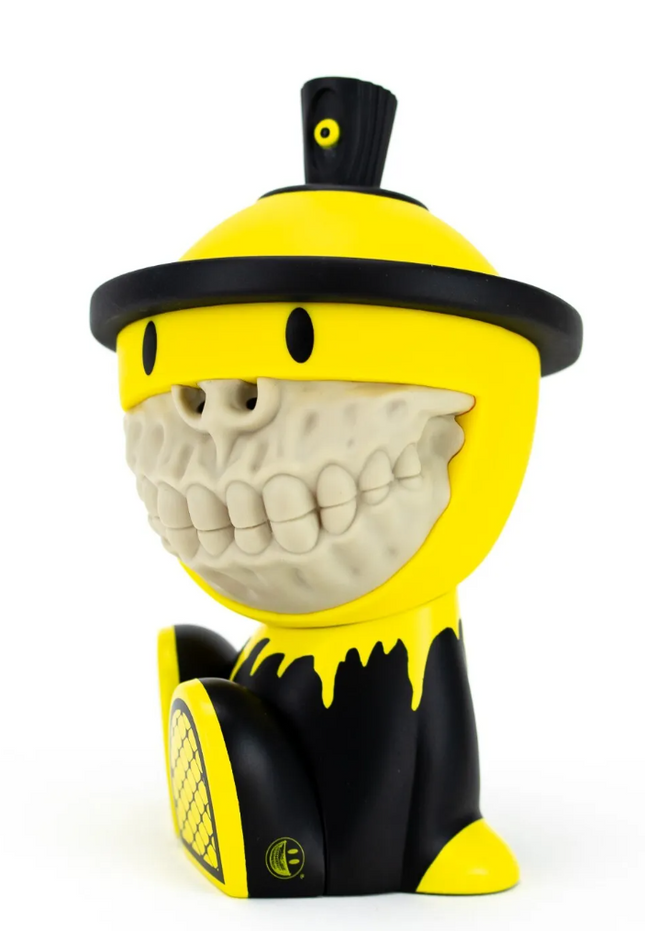
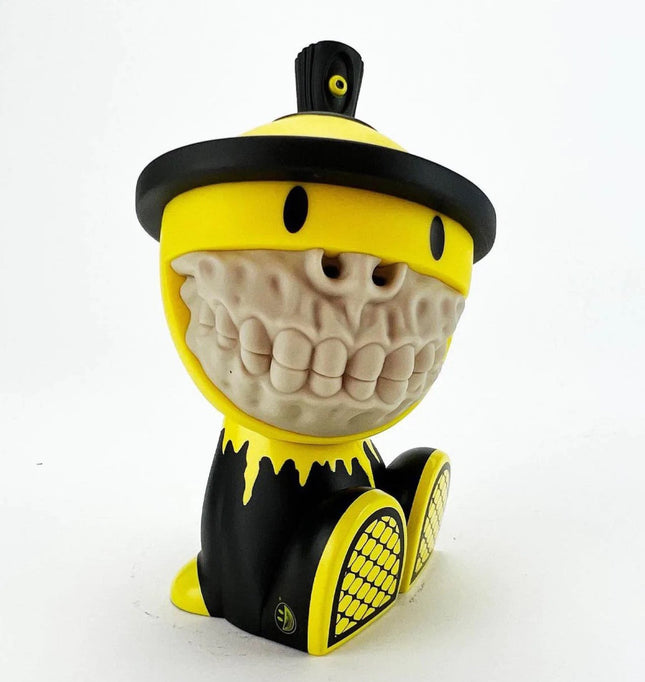
Ron English Grinbot Canbot Canz Art Toy by Ron English x Czee13
Grinbot Canbot Canz Limited Edition Vinyl Art Toy Collectible Artwork by Pop Culture Artists Ron English x Czee13. 2022 Limited Edition of 300 New In Box Rare Ron English Canbot Canz Art Toy Artwork Size 3x5.5. Ron English Grin Smiley Skeletons Smile x Czee13 Canbot Canz Grinbot Canbot Canz : A Cultural Artifact Blending Art and Pop Culture The Grinbot Canbot Canz emerges as a cultural artifact at the crossroads of street art innovation and pop culture iconography. This limited edition vinyl art toy results from a unique collaboration between pop culture artist Ron English and street artist Czee13. Limited to 300 pieces, each new in the box, the Grinbot Canbot Canz combines English's signature smiley skeletons with Czee13's renowned Canbot Canz design. The artwork stands at 3x5.5 inches, representing a tangible slice of street pop art & graffiti artwork that collectors and enthusiasts eagerly incorporate into their galleries. This collaboration showcases the synergistic power of two distinct artistic visions converging to create a singular piece that speaks volumes about contemporary art's trajectory. Ron English's recognizable grin, a motif that challenges viewers to find joy in the macabre, is reimagined in Czee13's Canbot Canz , a symbol deeply rooted in the graffiti and street art movement. The Canbot Canz is a canvas for English's explorations of the smiley symbol, delving into the complexities behind the universal symbol of happiness. Street Art's Dialogue with Pop Surrealism The Grinbot Canbot Canz reflects the ongoing dialogue between street art and pop surrealism, where familiar images are twisted and recontextualized to challenge perceptions and provoke thought. The collectible stands as a testament to the genre's evolution, highlighting the increasing incorporation of street art aesthetics into the broader scope of visual culture. The collaboration bridges the gap between lowbrow and high art, suggesting that the divide is more a matter of perception than substance. Collectors of the Grinbot Canbot Canz are not just acquiring a toy but investing in a piece of art history that captures the spirit of the times. Each Canbot Canz , while part of a more extensive series, carries its unique flair due to the hand-finished touches that Czee13 is known for. Owning a Grinbot Canbot Canz means holding a snapshot of street pop art's dynamic and ever-changing world, where every stroke and color choice is imbued with meaning and intent. The collaboration between Ron English and Czee13, culminating in the Grinbot Canbot Canz , marks a milestone in the vinyl art toy scene. It encapsulates the transformative journey of street art from the fringes to the mainstream while retaining its edge and ability to disrupt norms. This piece celebrates the merging of different art forms and commemorates the collective journey of artists who continue to push the boundaries of creativity and expression.
$250.00





